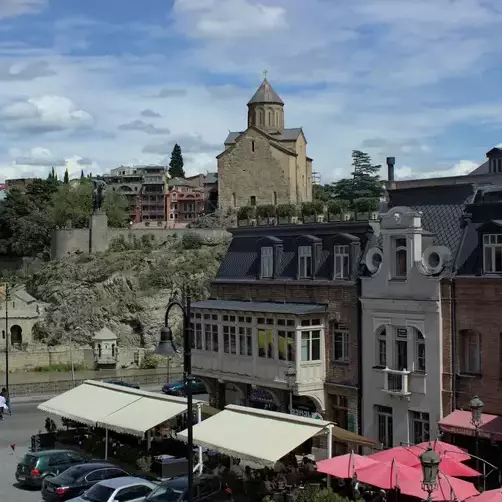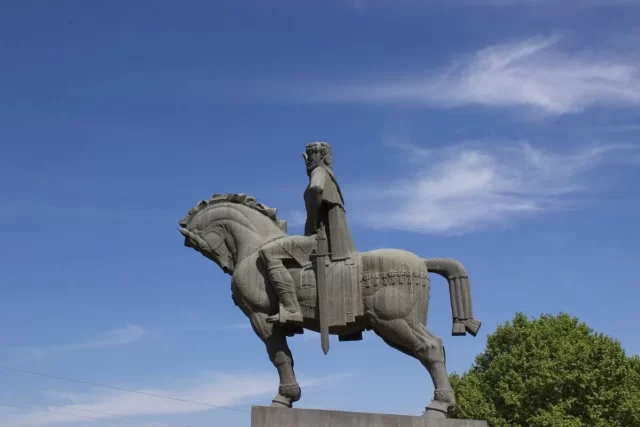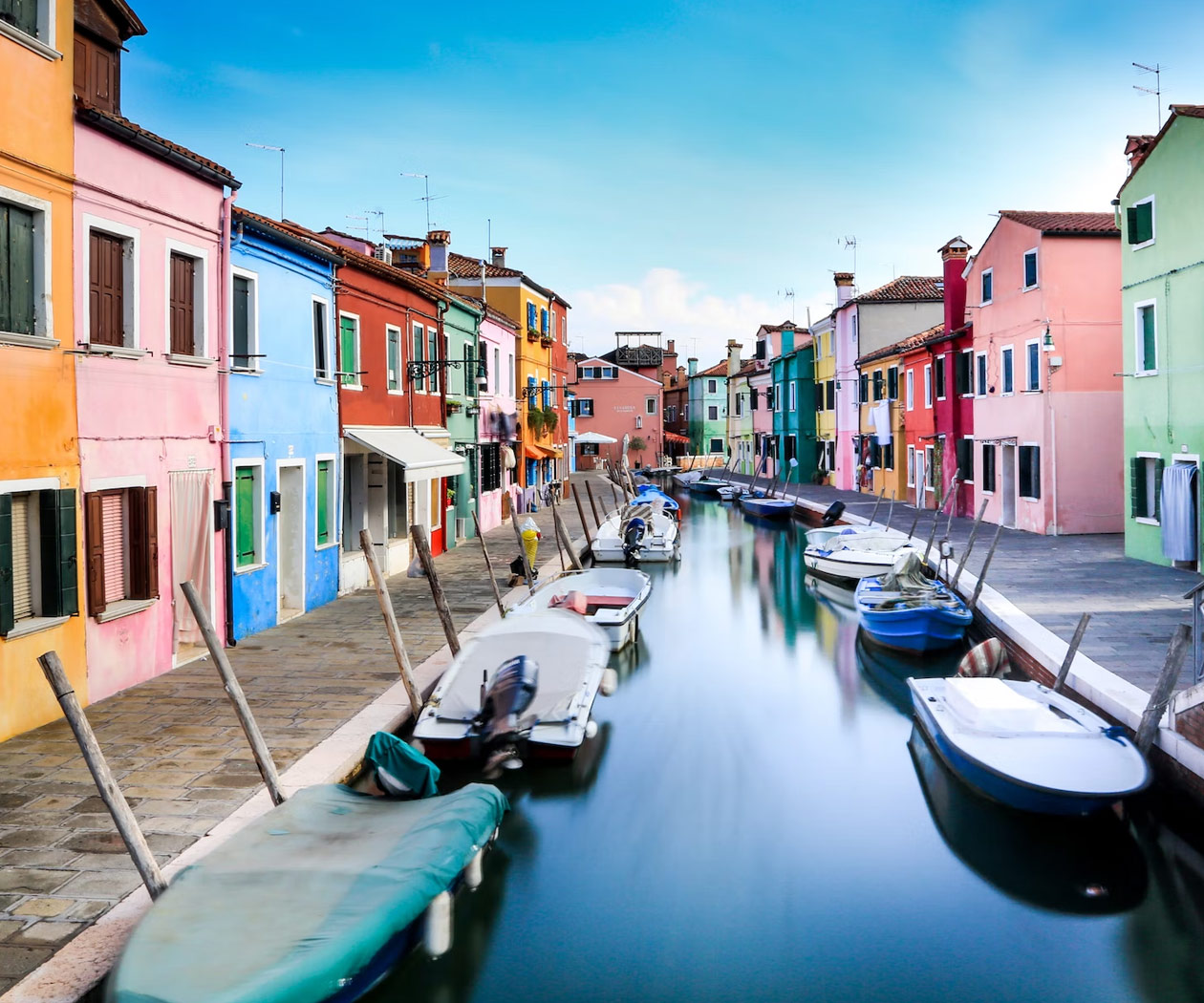
Premium & Incredible Tour Packages with Hotel Stays!
Unforgettable Old Tbilisi city tour
Price for one tour per person
$50
tour features
Tour Duration: 4 - 5 hours
Tour Location:Tbilisi
Tour highlights: Walking tour.
Tour is available
Step beyond the typical tourist trail and experience Tbilisi as locals know it. Led by certified guides who grew up in these ancient streets, this intimate walking tour reveals the hidden stories, architectural secrets, and cultural layers that make Georgia’s capital truly unforgettable.
Perfect for: First-time visitors, history enthusiasts, photographers, and anyone wanting an authentic introduction to Tbilisi’s soul.
✓ Narikala Fortress – 4th-century citadel with panoramic city views
✓ Scenic Cable Car Ride – Soar above the Mtkvari River valley
✓ Sulfur Bath District – Where Tbilisi’s 1,500-year story began
✓ Meidan Square – Historic merchant heart of the Old Town
✓ Ancient Caravanserais – Step inside Georgian trading posts from the Silk Road era
✓ Sioni Cathedral – Home to St. Nino’s sacred cross
✓ Anchiskhati Church – Tbilisi’s oldest surviving building (6th century)
✓ Peace Bridge – Modern architectural marvel spanning ancient riverbanks
Meeting Point: Metekhi Plateau or your hotel
Your adventure begins at the historic Metekhi Church plateau, where the bronze statue of King Vakhtang Gorgasali stands watch over his city. From this elevated viewpoint, you’ll get your first breathtaking panorama of Old Tbilisi spreading before you—the rust-red roofs, the Narikala fortress crowning the ridge, and the turquoise dome of the sulfur baths below.
What you’ll learn: The founding legend of Tbilisi and how a king’s hunting accident created Georgia’s capital city.

Narikala Fortress & Cable Car Experience
Board the modern cable car for a spectacular aerial journey from Rike Park to Narikala Fortress. As you glide above the Old Town, your guide will point out landmarks and neighborhoods you’ll explore on foot.
The fortress itself dates to the 4th century, though it was expanded by the Persians in the 7th century and later by the Arabs. From its ancient walls, you’ll understand why this strategic hilltop has been fought over for 1,600 years—the views stretch across the entire city and surrounding mountains.
Instagram moment: Capture the best skyline shots from the fortress ramparts, especially the juxtaposition of medieval churches and contemporary architecture.
The Sulfur Bath District (Abanotubani)
Descending into the Bath District feels like entering another era. Here, beneath distinctive domed brick structures, hot sulfur springs bubble up from deep underground—the same springs that gave Tbilisi its name (tbili means “warm” in Georgian).
Your guide will show you the ornate façades of historic bathhouses, some of which date back centuries. These aren’t museum pieces—locals still come here to soak in the naturally heated mineral waters, just as their ancestors did.
Hidden gem: The narrow Legvtakhevi Canyon, recently restored to reveal its 19th-century charm, complete with a small waterfall tucked behind the baths.
Meidan Square: The Trading Heart
Once the bustling commercial center of medieval Tbilisi, Meidan Square has watched centuries of merchants, travelers, and traders pass through. The cobblestoned square retains its historic character while hosting modern cafés, where you can savor Georgian wine in the shadow of centuries-old architecture.
Did you know? The intricate wooden balconies overhanging the square are traditional Georgian architectural features, designed to maximize space in the narrow Old Town lanes.
Caravanserais: Silk Road Echoes
Few visitors know that Tbilisi once hosted 18 caravanserais—the ancestors of modern hotels and shopping malls. These two-story courtyards served traveling merchants along the Silk Road: animals and storage on the ground floor, living quarters above.
You’ll visit remarkably preserved examples where you can still sense the cosmopolitan energy that made medieval Tbilisi a crossroads of cultures. Some now house art galleries and craft workshops, breathing new life into ancient stones.
A City of Coexistence
Within a single neighborhood, you’ll encounter Georgian Orthodox churches, Armenian churches, a synagogue, a mosque, and a Catholic church—all peacefully neighboring each other for centuries.
This remarkable religious diversity tells the story of Tbilisi’s role as the administrative capital of the entire Transcaucasus region. Your guide will explain how Georgia’s tradition of tolerance created one of the most multicultural cities in the medieval world, a character it maintains today.
Synagogue visit: Learn about the 2,600-year history of Jewish communities in Georgia, one of the world’s oldest continuous Jewish populations.
Sioni Cathedral: Spiritual Center
Built in the 11th century (and rebuilt several times after destruction), Sioni served as Tbilisi’s main cathedral for centuries. Inside, you’ll see one of Georgian Orthodoxy’s most sacred relics: the grapevine cross of St. Nino, who converted Georgia to Christianity in the 4th century—making Georgia one of the world’s first Christian nations.
The cathedral’s weathered stone walls and faded frescoes speak to the turbulent history of a city that has been conquered and rebuilt more than 40 times.
Freedom Square & the City’s Evolution
Emerging from the medieval lanes, you’ll reach Freedom Square, the symbolic heart of modern Tbilisi. What’s now the city center was once the city’s edge—your guide will point out where the old city walls stood.
Optional visit: The National Museum’s Treasury houses stunning examples of Georgian goldsmithing spanning three millennia, including artifacts from the 3rd millennium BCE. (Entrance fee not included; can be arranged)
Baratashvili Avenue & City Walls
Walking along Baratashvili Avenue, you’ll see exposed sections of the old city walls and gates dating to the 11th-13th centuries, preserved exactly where archaeologists discovered them during reconstruction work. Glass walkways let you peer down at these medieval foundations beneath your feet.
The Rezo Gabriadze Clock Tower
One of Tbilisi’s most beloved modern landmarks, this whimsical clock tower was designed by Georgia’s celebrated puppet theater director. Every hour, a small angel emerges to strike a bell—a charming blend of fairytale and craftsmanship that locals adore.
Show time: Try to time your visit for the top of the hour to see the automated performance.
Anchiskhati Church: Tbilisi’s Oldest Building
This modest stone church, dating to the 6th century, is the oldest surviving structure in Tbilisi. Its simple, weathered exterior has witnessed everything from Persian invasions to Soviet occupation, standing quietly as dynasties and empires rose and fell around it.
The Bridge of Peace
Your tour concludes with a stroll across this ultra-modern pedestrian bridge, a stunning contrast to the ancient neighborhoods you’ve just explored. Designed by Italian architect Michele De Lucchi, its glass and steel bow-shaped span symbolizes Tbilisi’s journey from past to future.
Evening recommendation: Return after dark when the bridge’s LED lights create a spectacular illuminated display.
Rustaveli Avenue: Tbilisi’s Main Street
Your final stop is Rustaveli Avenue, the elegant thoroughfare that serves as modern Tbilisi’s cultural spine. Lined with theaters, galleries, shops, and cafés, it’s where locals come to see and be seen.
Your guide will provide insider tips on the best spots for your free time—from cozy wine bars to galleries featuring contemporary Georgian artists.
The Legend of Tbilisi’s Founding
No visit to Tbilisi is complete without hearing its origin story:
In the 5th century, King Vakhtang Gorgasali of Georgia was hunting with his prized falcon near the Mtkvari River. The falcon caught a pheasant, but the wounded bird managed to escape, plummeting into the valley below. When the king’s men searched for the prey, they found it had fallen into a hot sulfur spring—and been boiled instantly. The falcon, pursuing its quarry, met the same fate.
Amazed by the discovery of these hot springs, King Vakhtang ordered a city built on the spot. He named it Tbilisi—from the Georgian word tbili, meaning “warm.” By royal decree, Tbilisi became Georgia’s capital, a position it has held for over 1,500 years.
Historical note: While the legend is beloved, archaeological evidence suggests settlements existed here even earlier, drawn by the same warm springs that captured the king’s imagination.
Practical Information
Meeting Point: Metekhi Church (if your hotel is in Old Tbilisi, pickup can be arranged)
Start Time: 10:00 AM or 2:00 PM daily
Duration: 4-5 hours
Difficulty: Easy to moderate (involves walking and stairs)
Total walking distance: Approximately 3-4 km
What to Bring
- Comfortable walking shoes (cobblestones and uneven surfaces)
- Sun protection (hat, sunscreen) in summer
- Light jacket (evenings can be cool)
- Camera or smartphone
- Modest clothing for church visits (shoulders and knees covered)
- Water bottle (refills provided)
Accessibility
This tour involves stairs, hills, and uneven medieval streets. While we walk at a relaxed pace with frequent stops, it may be challenging for those with mobility issues. Please contact us to discuss adapted itineraries.
Weather Policy
Tours operate rain or shine. In case of severe weather, we’ll contact you about rescheduling or alternative arrangements.
Special tours in Tbilisi
For those who want to learn about architecture and city rumors of XIX – XX century Tbilisi, we offer special, unique tours from our professional guides.
- Tour in the Sololaki district – 3 hours
- The architecture of Tbilisi – 3 hours
- Tour in the Chugureti district, including David Agmashenebeli avenue.
For more information about special tours in Tbilisi, please contact us.
Tbilisi city tour FAQ
Frequently Asked Questions
Q: How long is the Old Tbilisi City Tour?
A: The tour lasts 4-5 hours, including cable car rides and time to explore key sites. We maintain a relaxed pace with plenty of photo opportunities.
Q: What is the cost of the Old Tbilisi City Tour?
A: Prices range from $20-$45 per person, depending on group size. The more people in your group, the lower the per-person cost. All entrance fees and cable car tickets are included.
Q: Is the Old Tbilisi City Tour suitable for children?
A: Absolutely! Children ages 6+ typically enjoy the tour, especially the cable car ride and fortress views. We can adapt our storytelling for younger audiences. Children under 12 receive a 50% discount.
Q: Are there any physical requirements for the Old Tbilisi City Tour?
A: You should be comfortable walking 3-4 km over 4-5 hours, including stairs and hills. We take breaks and walk at a comfortable pace. If you have specific mobility concerns, please contact us to discuss options.
Q: Are there food or drink options available during the Old Tbilisi City Tour?
A: We provide bottled water and can point out cafés for snack breaks. The tour doesn’t include meals, but we can recommend excellent lunch spots along the route or end near restaurants you might enjoy.
Q: Is it possible to customize the Old Tbilisi City Tour to fit my specific interests?
A: Yes! We offer private tours that can be tailored to your interests—whether that’s photography, religious history, Soviet architecture, or Georgian literature. Contact us to design your perfect tour.
Q: What languages are tours offered in?
A: We offer tours in English, Russian, and Georgian. Other languages may be available with advance notice.
Q: Can I book a last-minute tour?
A: We recommend booking at least 24 hours in advance, but we’ll do our best to accommodate same-day requests if guides are available.
PAX | 2 | 4 | 6 | 8 | 10 |
Price USD | 45$ | 35$ | 30$ | 25$ | 20$ |





Very nice introduction to the city
We had very interesting walking tour in October with Rusudan. Very good experience.
I did a day tour with Highlander Travel where we covered some notable sights in Tbilisi as well as the former capital of Georgia, Mtskheta. Rusudan from Highlander Travel made sure that I got to see all the main attractions while also giving plenty of information about the history of the places I saw and answering all my questions about the attractions which made my experience even better as my guide was well-informed about each and every place. The tour in Mtskheta was seamless and I saw the Cathedral which is one of the holiest sites in Georgia for Orthodox Christians and is also where members of the Royal family (Including the last King of Georgia) were buried. This along with the Jvari Monastery that overlooks Mtskheta from a high altitude makes it a must visit spot for the scenery, rich history and friendly locals. Highlander Travel is one of the most efficient and accommodating tour operators I’ve come across in Georgia so far and when we returned to Tbilisi for the city tour, I got to see many places which I had not heard of or researched about before traveling to Georgia which is another plus point as their tours are not the normal ones where you only see the main attractions and go but offer a more immersive and Georgian experience! Overall, I’d definitely go on more tours with them in the future when I return to Georgia with my family next time! Less